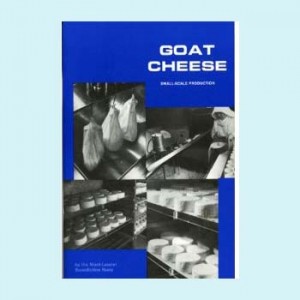 Goats are an extremely versatile animal on a small homestead. They are easy to keep in small spaces (where a cow would be impossible), cheaper to feed, and produce large volumes of milk that can be used for drinking, cooking, and making delicious cheeses. Goats are also an excellent meat source and for their size, produce as much meat, pound per pound, as a cow in a much smaller area, with a lot less feed conversion cost. The only thing standing in the way of most newcomers to the back-to-basics lifestyle and delicious cheese is experience and knowing how to make cheese.
Goats are an extremely versatile animal on a small homestead. They are easy to keep in small spaces (where a cow would be impossible), cheaper to feed, and produce large volumes of milk that can be used for drinking, cooking, and making delicious cheeses. Goats are also an excellent meat source and for their size, produce as much meat, pound per pound, as a cow in a much smaller area, with a lot less feed conversion cost. The only thing standing in the way of most newcomers to the back-to-basics lifestyle and delicious cheese is experience and knowing how to make cheese.
Once you have made your first batch of cheese from your own goat’s milk, there will be no turning back! It is not only delicious, it is fun to do, and the pride you get from creating something others wouldn’t know how to do, from an animal you own and care for, is without measure. The book Goat Cheese: Small Scale Production is written by the Mont-Laurier Benedictine Nuns, translated from French by Eveline Inksetter, and published by the New England Cheesemaking Supply Company. It covers everything you need to know from the types of supplies you will need, and how to use them, to the different types of cheeses you can make from goat cheese.
While goat cheese is often associated with a soft, “farmer’s cheese” (somewhat the consistency of a mix of cottage cheese and cream cheese), the fact is, goat’s milk can be used to create a very wide variety of cheeses. One of my favorites to make is mozzarella. Goat’s milk makes a deliciously mild mozzarella cheese and it is so much fun to make. It’s true that it is harder to make the “hard” cheeses such as cheddar from goat’s milk. That is partly because the milk is so creamy and does not separate the way cow’s milk does. However, it is possible to make hard cheeses with goat’s milk if you know how, and the Nuns go into great detail on the ripening and aging of hard cheeses.
Additional information in Goat Cheese: Small Scale Production includes:
- Using cheeses for melting
- Making yogurt
- How to make butter from goat’s milk
- How to freeze milk to store it for later use
- How to make ice cream and ice milk
- and finally, how to make cream sugar
Even for homesteaders who do not have enough room to keep a goat, or feel like they can’t spare the time to care for one and milk it daily, it is possible to have a goat’s milk source. Contact a local farmer who owns goats and inquire about a share in ownership. You pay for part of the costs of keeping a goat, and the chores involved in care and milking, and in exchange, get a percentage of the milk from that goat.
For anyone who wants to be self-sufficient, and has access to fresh goat’s milk (either from their own animals, or from a share in a local farmer’s goats), the book Goat Cheese: Small Scale Production is a great way to learn how to use the milk to its fullest advantage for added variety to your food stock.
 Off The Grid News Better Ideas For Off The Grid Living
Off The Grid News Better Ideas For Off The Grid Living
